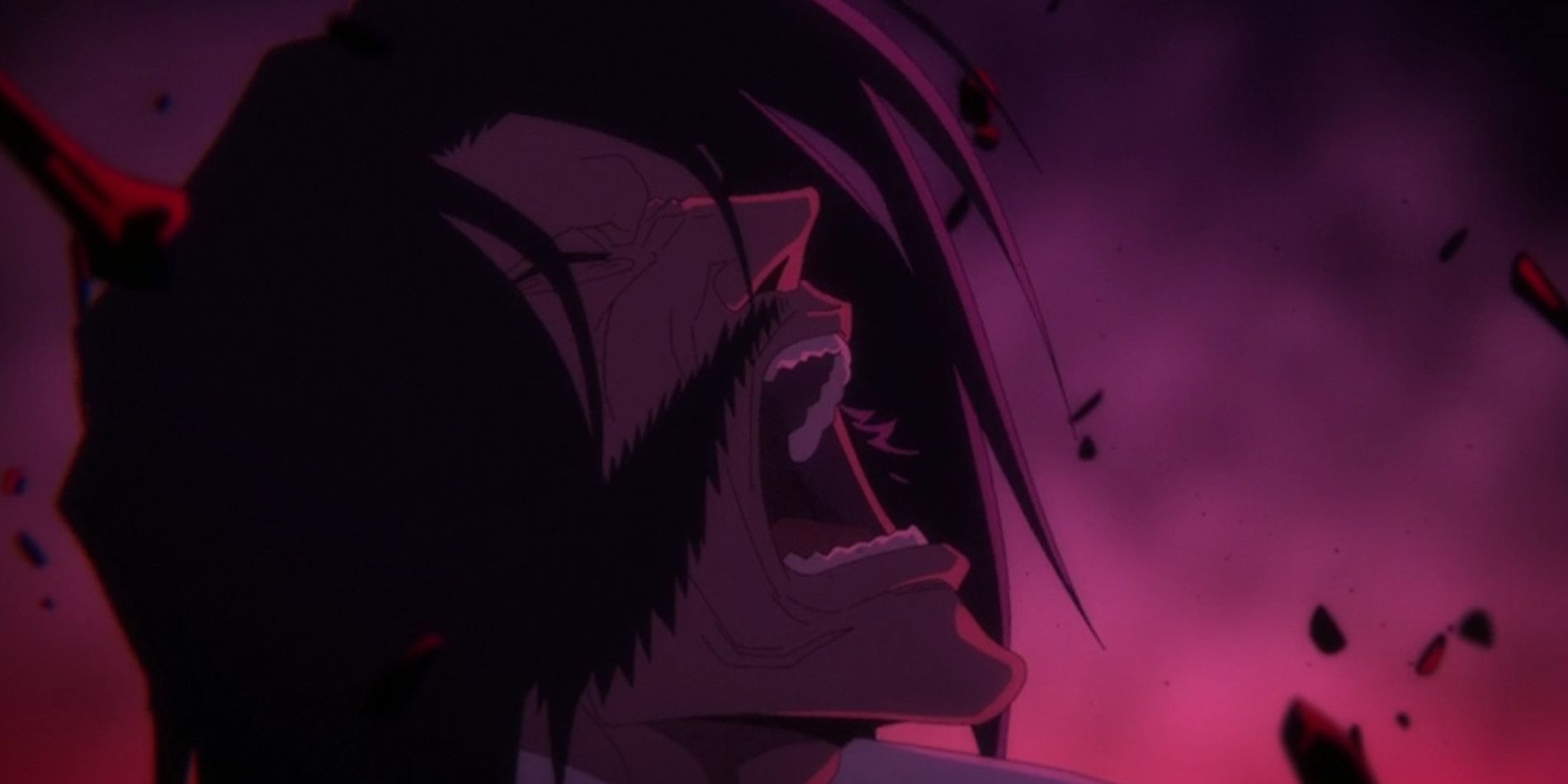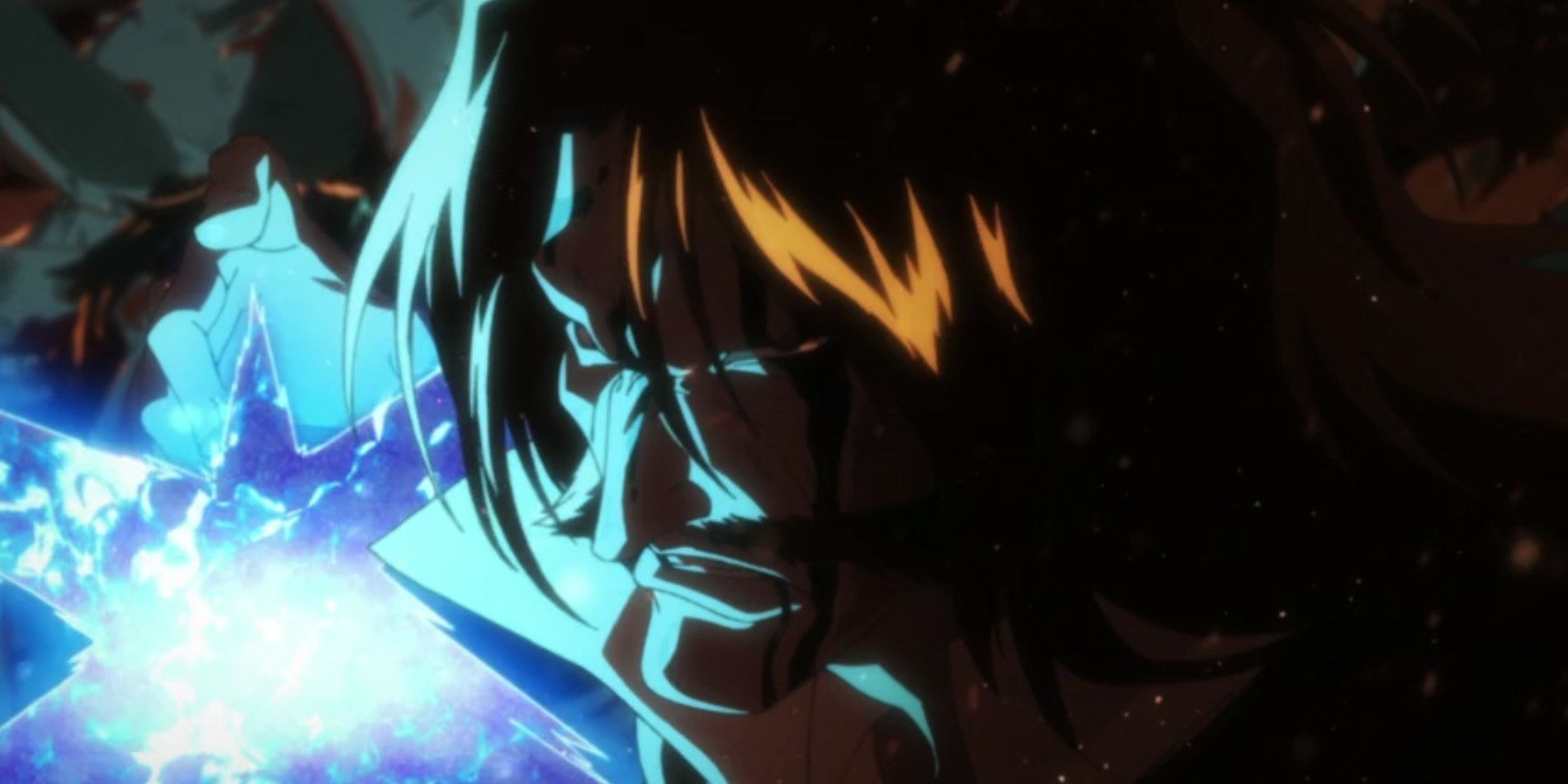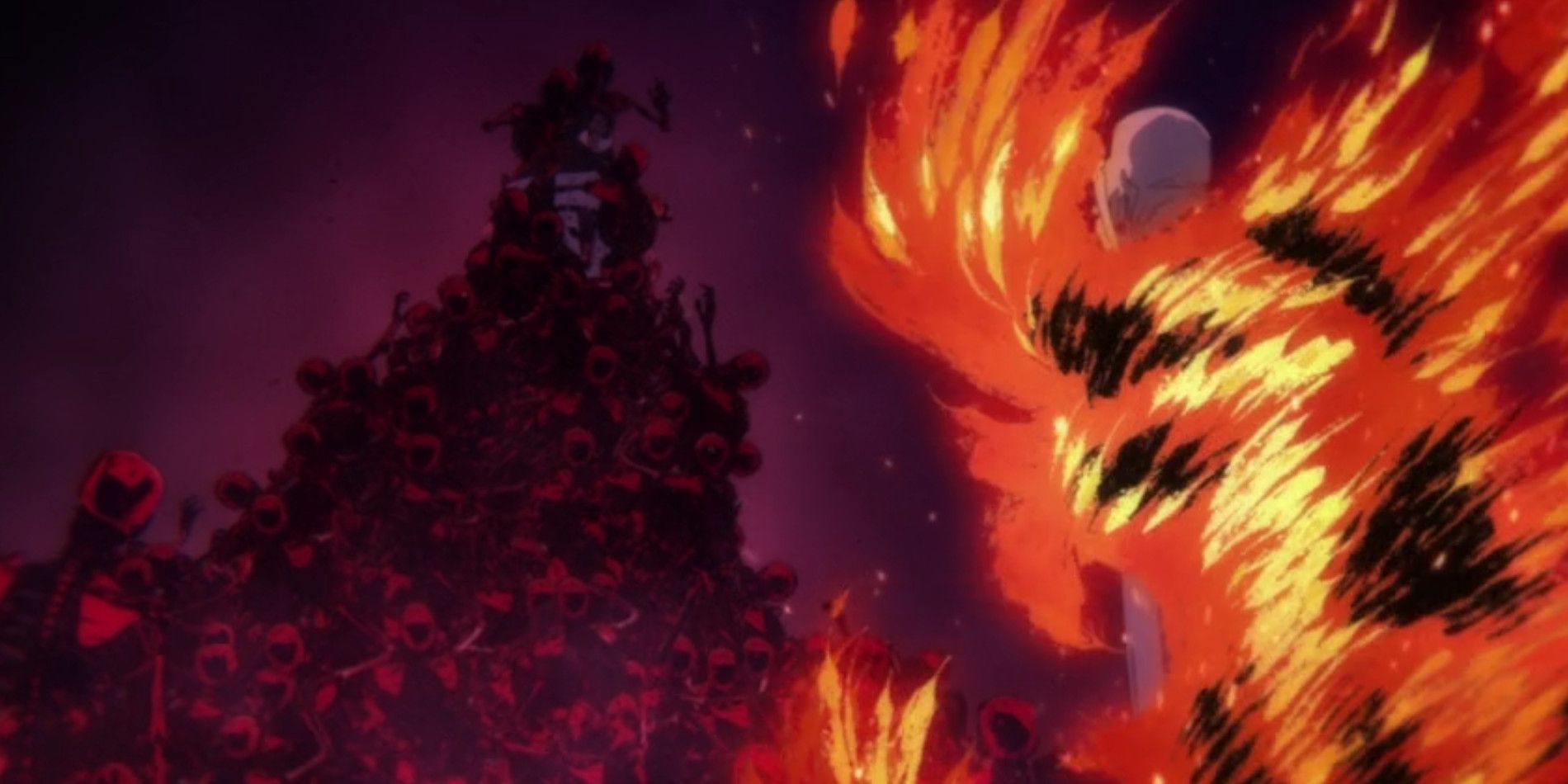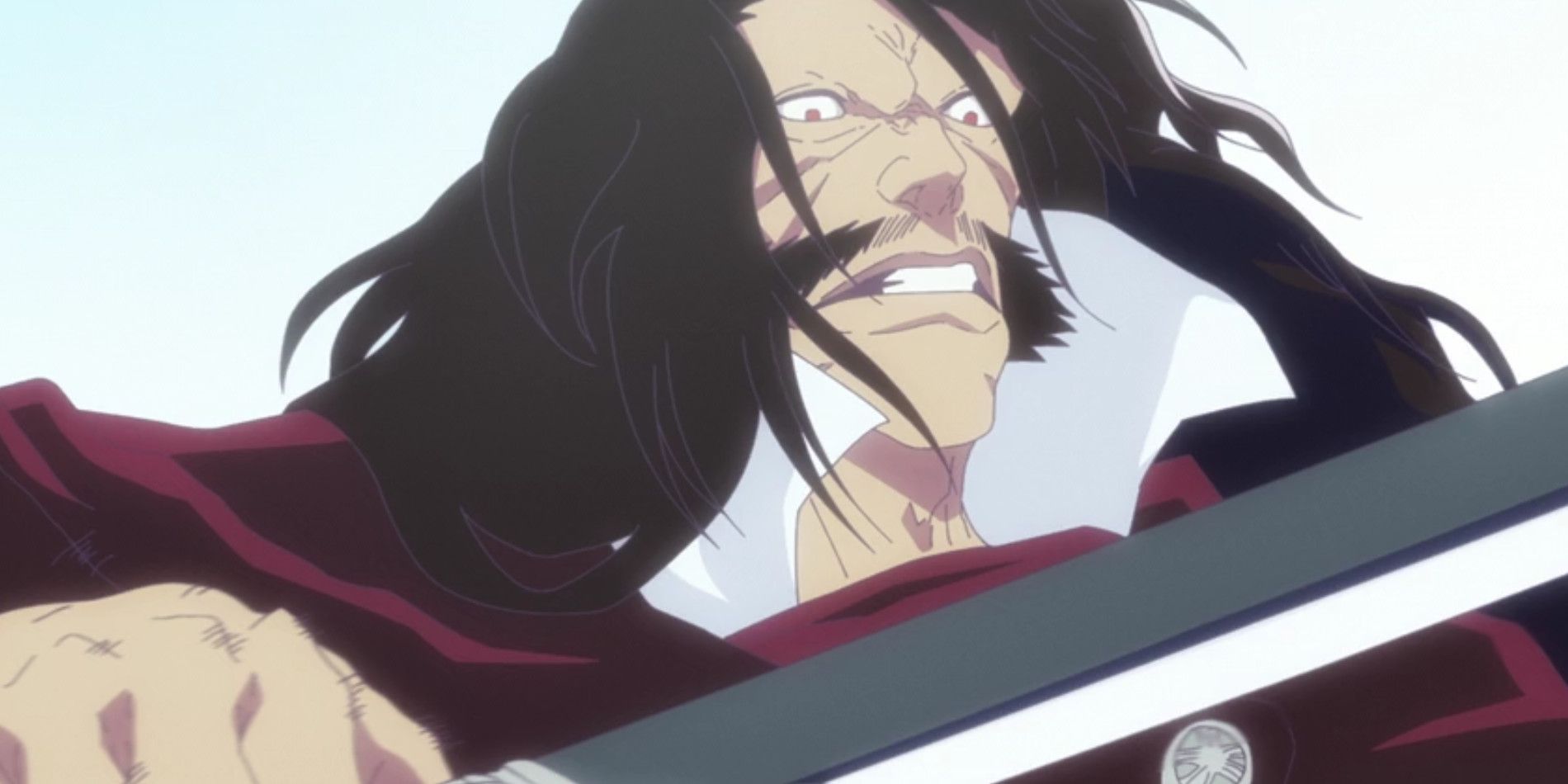The following contains spoilers for Episode 6 of Bleach: Thousand-Year Blood War, "The Fire", now streaming on Hulu in the U.S. and internationally on Disney+.
Episode 6 of Bleach: Thousand-Year Blood War depicted the Battle of the Bosses, finally unveiling the true power of Genryusai Shigekuni Yamamoto and his Bankai, Zanka no Tachi. The dynamic animation portrayed an intense fight, keeping audiences on their toes as each technique surpassed the previous and the stakes continued to climb with each passing second due to the overwhelming power of Yamamoto’s Bankai slowly destroying the Soul Society. However, another factor was being displayed within the battle itself -- the history and emotions of Yhwach.
Whilst the person Yamamoto was actually fighting was the Sternritter “Y”, Royd Lloyd; his power, 'The Yourself', replicated Yhwach, down to his memories, feelings, power and most importantly, motivations. For all intents and purposes, the internal dialogue witnessed was a literal exact replica of Yhwach and how he would have behaved, thought, and felt. With this information taken into account, the battle was not only a marvelous spectacle of the most powerful characters engaging in world-breaking combat, it offered an in-depth exploration as to what Yhwach is doing, why his relationship with Yamamoto is laced with vengeful hatred, and also helped audiences connect with a character who has only just joined the vast cast of Bleach.
Imagery Portraying the Past
There are multiple methods of storytelling when it comes to revealing the backstory of a character. Exposition dumps are considered one of the less narrative intriguing manners in which to do so, with the practice of "show don't tell" being preferred by a majority of fans. The Bleach anime decided to make use of the latter. Up to this point, it was known that Yhwach and the Quincy warred with Soul Reapers many years prior, but by having the imagery flashback to his and Yamamoto’s previous battle added a level of urgency and connection to the present conflict, which the audiences are currently engaged in.
This window into the past, even if only in brief flickers of visual images, helped transform Yhwach from a newly appearing super-powered villain, which can be considered lazy writing at times, into a crucial element in Bleach's world-building. By depicting a connection through visual storytelling instead of repeatedly stating in a monologue or narrator dialogue that Yhwach was part of the world long ago with a vendetta against the Soul Society, it made the conflict feel far more personal and predestined. The subtle moments of internal dialogue between the two characters then carries far more weight as they consider the growth and power of their opponent.
Displaying Yamamoto as the Villain
Understanding the history of an antagonist certainly helps audiences connect to their arc, but Bleach went a step further during this fight scene. The Soul Reapers have been heroic, but flawed, figures of Bleach since the Soul Society Arc. While many are good-natured, there has always been a shadow of impurity foreshadowed in their past. They are complex but still the heroes of the story, alongside Ichigo Kurosaki. The Wandenreich arrived and began their slaughter, immediately being considered the monstrous invaders. Yet, the nuance of their position was given some light through the flashback imagery and the use of Yamamoto’s Bankai power, Zanka no Tachi, Minami: Kaka Jumanokushi Daisojin -- Power of the South -- to raise the dead.
Yamamoto’s tormenting of Yhwach through utilizing the Quincy’s dead comrades from a thousand-years prior was nothing short of being rage filled and sadistic. Yamamoto showed to not only have the upper hand throughout the fight, but was practically dominating Yhwach to the point of where he could patiently watch as Yhwach was overrun by corpses of his dead friends. This act made Yhwach appear vulnerable and allowed audiences to sympathize with him far more easily. Even as an antagonist, being clawed and grappled by the bone-burnt remains of former friends is an unparalleled torment.
The Importance of Sympathetic Antagonists
Having an antagonist that is as compelling as the protagonist is important to any story. One fault often attributed to Sosuke Aizen was the lack of revealed motives. He wanted power, he wanted to destroy the Soul King, but how he came to be the man he was had never truly been explored. When compared to a character like Madara Uchiha from Naruto, there is a stark difference in personal development in the path that led to their position as an antagonist. An emotional motivation that audiences can relate to is a true and tested formula to creating a sympathetic villain that audiences can connect to on the same level as the protagonist.
Through a single episode, peppered into an unyielding fight scene, Bleach was able to not only bring a new and unknown character to life through expertly placed imagery, but also balance the scales of morality by offering an understandable, yet still despicable, motivation for Yhwach. Revenge is a well-known and well-used motivating factor in many villains throughout the history of storytelling, and it is likely there is more to Yhwach than simple vengeance. After this episode, audiences will be far more invested into the developing arc of the series final antagonist.




